
Photographica Pages
An online guide to collectable cameras and related stuff
Graflex Backs and Film Holders
There are few things that Graflex did not do well. Naming their camera backs was
one of their worst shortcomings. It may seem nitpicking, but as far as I can
tell it's caused lots of people unnecessary grief over the decades, and was
really avoidable.
The problem started when Folmer & Schwing changed their name to Graflex
in 1945, which happened to be their most distinctive and popular line of cameras
prior to that. So there was a Graflex company and a Graflex camera. There other
popular line of camera was the Speed Graphic. The Graflex was an SLR, so there
was no real need for a ground glass back on the camera. Film holders, film pack
adapter backs, cut film magazines and rollfilm backs slipped into a channel on
the bottom, and a sliding bar locked them in place from the top. On double sided
film holders this became a groove on the edge of the holder, although it is
really one rail for each side of the holder. The face of the film holder (or
other device) had a groove on the face that positioned it correctly
horizontally. The film holders and rollfilm backs are referred to as
"Graflex" holders, and "Graflex" rollfilm backs, named after
the camera they fit.
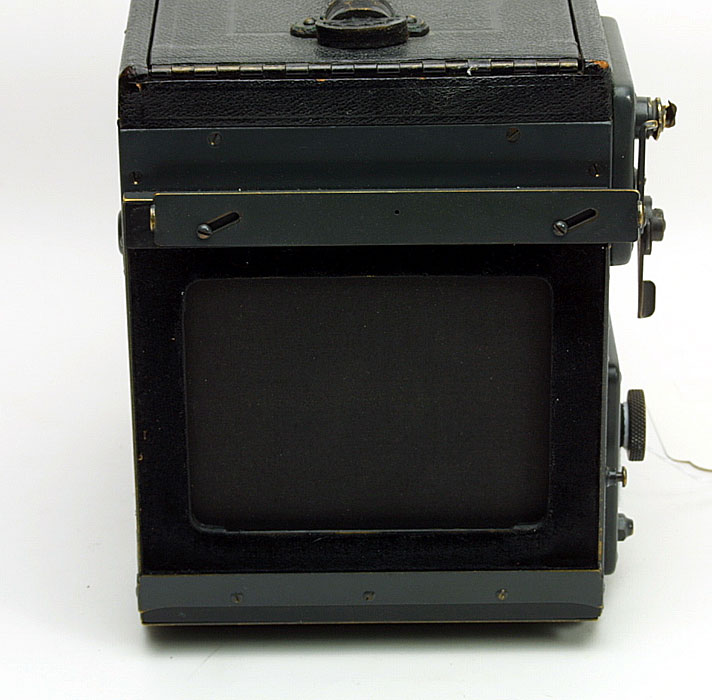
The back of a Graflex SLR
Because the Speed Graphic was not an SLR, it was nice to have the ability to
focus on a ground glass. Many users never regularly used this feature, they
focused with the rangefinder and composed with the viewfinder. This was
essentially a fast moving press camera. The back was fitted with a ground glass
focusing panel which did not have to be removed to load film. It was mounted on
two pieces of spring steel which would allow it to move out away from the focal
plane, the springs holding it tight against the film holder. The film would now
occupy the same plane as the ground glass did before the holder was inserted.
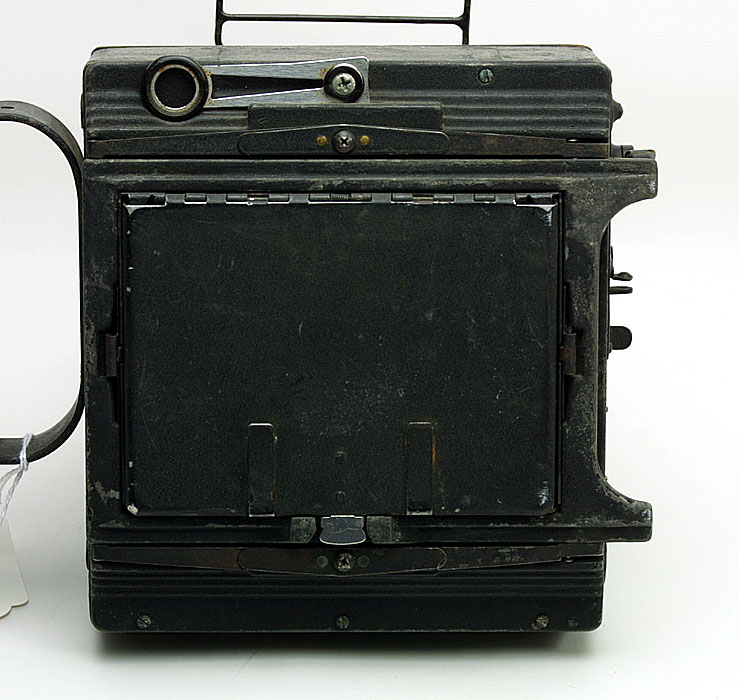
The Graphic back
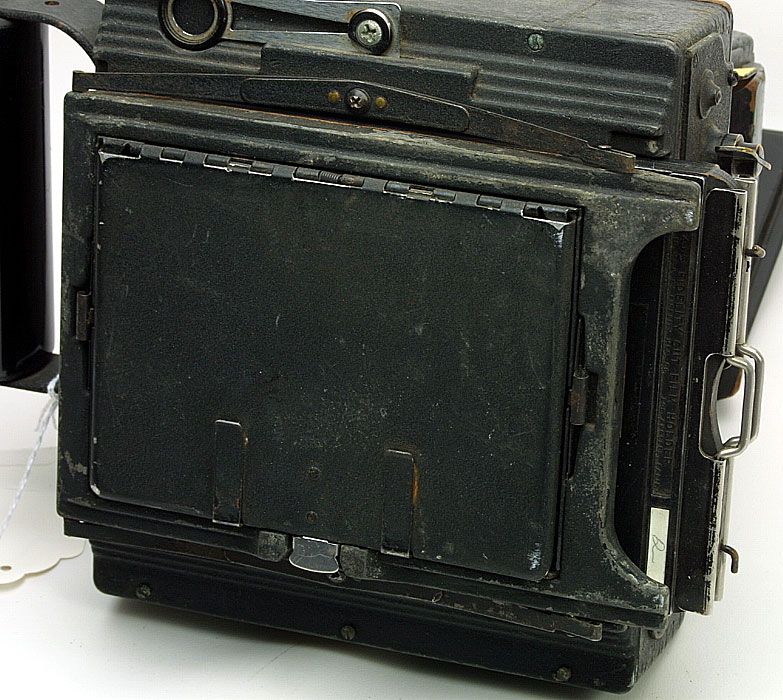
The Graphic back with a film holder in place
In a perfect world Graflex would have designed both backs to use the same
film holders, but apparently this is not a perfect world. The holders for the
Speed Graphic lack the groove running down the edges, and are longer and a bit
narrower than there Graflex counterparts. The locking groove on the front is
replaced by a ridge, which of course, is in a different location. The back for
the Speed Graphic is sometimes referred to as a "spring back" or a
"Graphic" back.
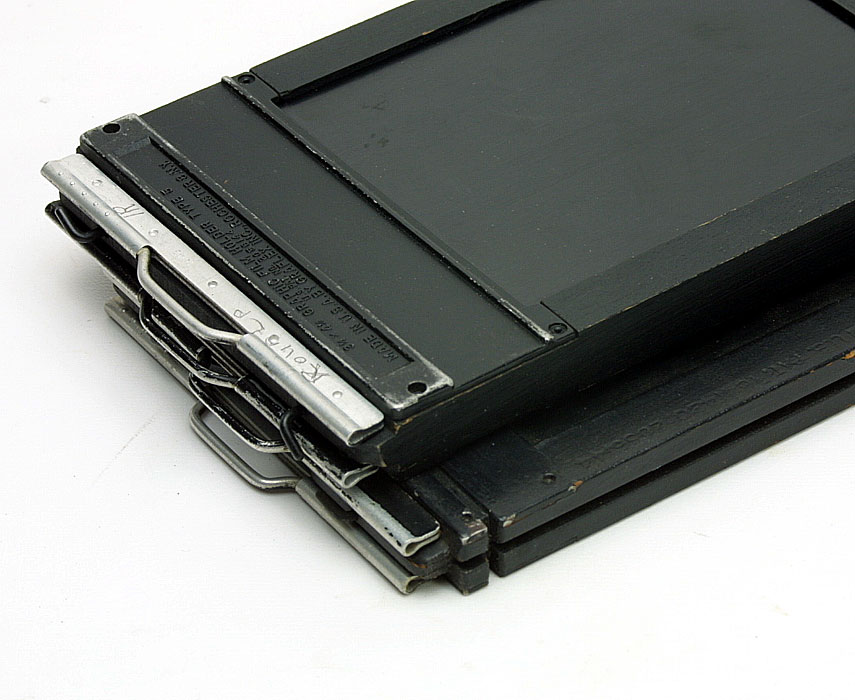
A Graphic holder on top, and a Graflex on the bottom.
That would have been bad enough, but they made an improvement on the Graphic
back. They redesigned it with a removable focusing panel. You push down on the
two chrome rails (one immediately above and below the panel) and it can be
removed, and a rollfilm back mounted in is place. The film plane
maintained a constant location, so the camera could be focused by rangefinder or
ground glass regardless of which film holding device was used. The new back was
named "Graflok", but it was designed to accept the older Graphic film
holders. So for some unfathomable reason (at least to me) Graflex further
muddied the waters by marking their rollfilm backs as Graphic backs in spite of
the fact that they will not fit cameras with a Graphic back.
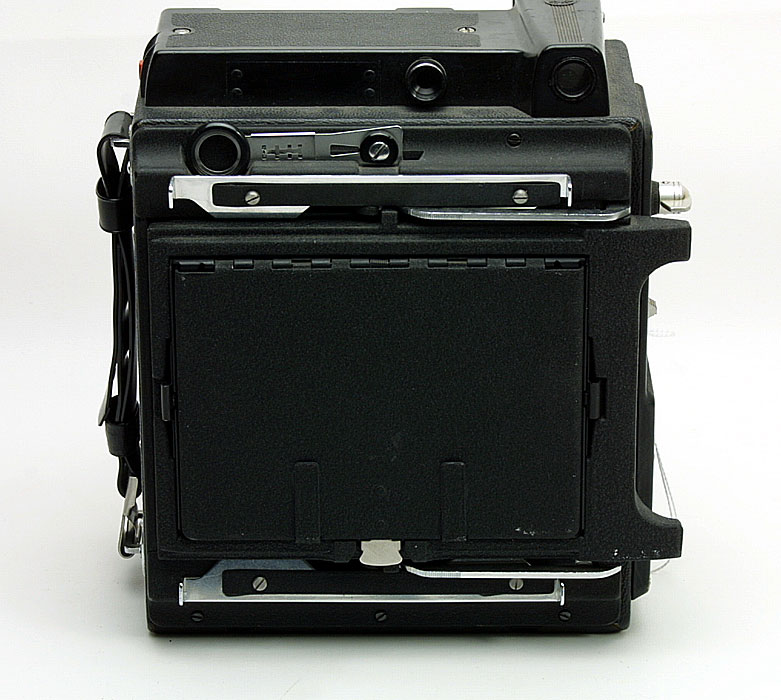
The Graflok back
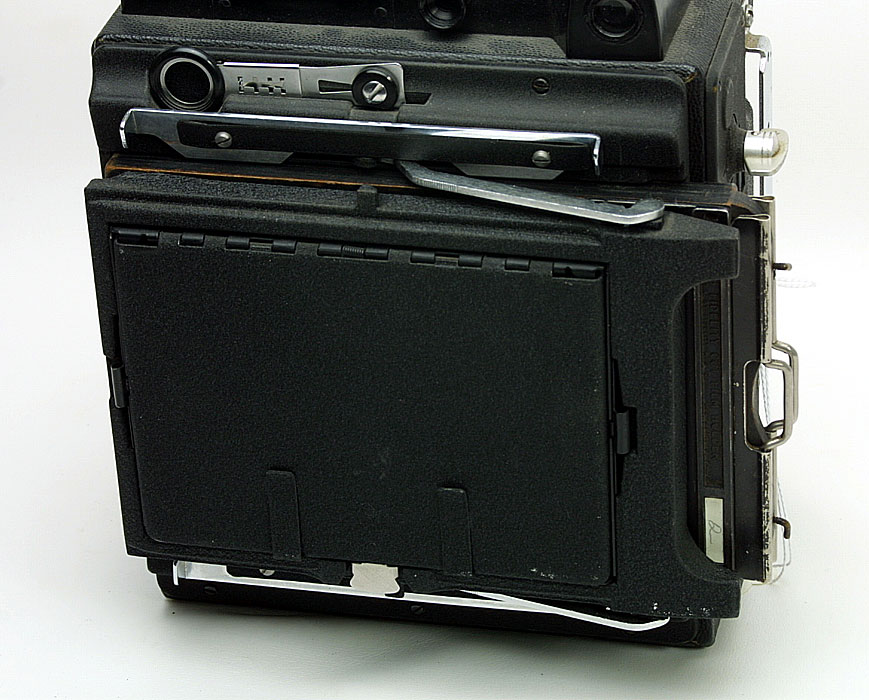
A Graflok with a film holder inserted
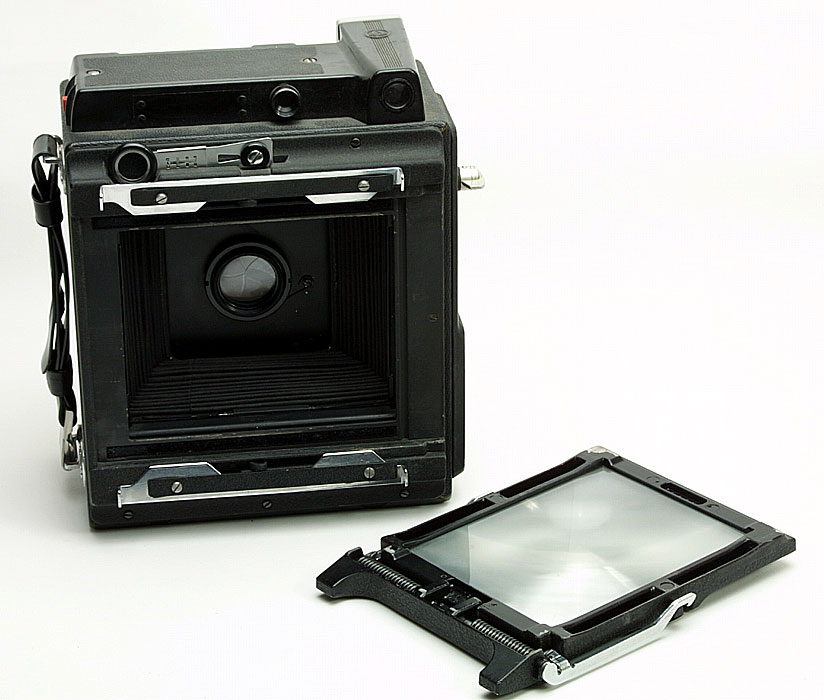
A Graflok with the focusing panel removed.
Graflex made their rollfilm backs for 2-1/4 x 3-1/4, 3-1/4 x 4-1/4 and 4x5
format cameras. For simplicities sake I am going to refer to the first two as
2x3 and 3x4 from here on out. I'm not a touch typist. The 2x3 size Graphic back
is by far the most commonly found. The 4x5 isn't too hard to come by, the 3x4 is
the least common. The 2x3 Graflex is probably about as tough to find as the 3x4
Graphic, the 4x5 Graflex is a bit tougher and the 3x4 the hardest of all to
find. That doesn't necessarily affect the price that much as the demand is
highest for the 2x3 Graphic. The others command a small premium.
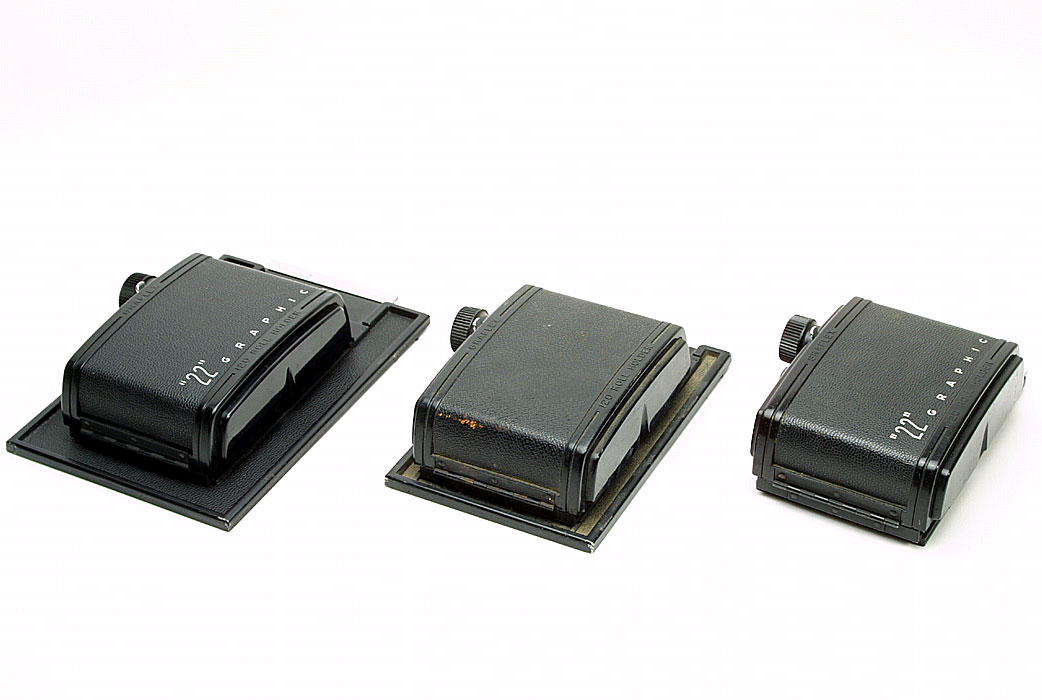
Rollfilm backs for the 4x5, 3x4 and 2x3 size cameras
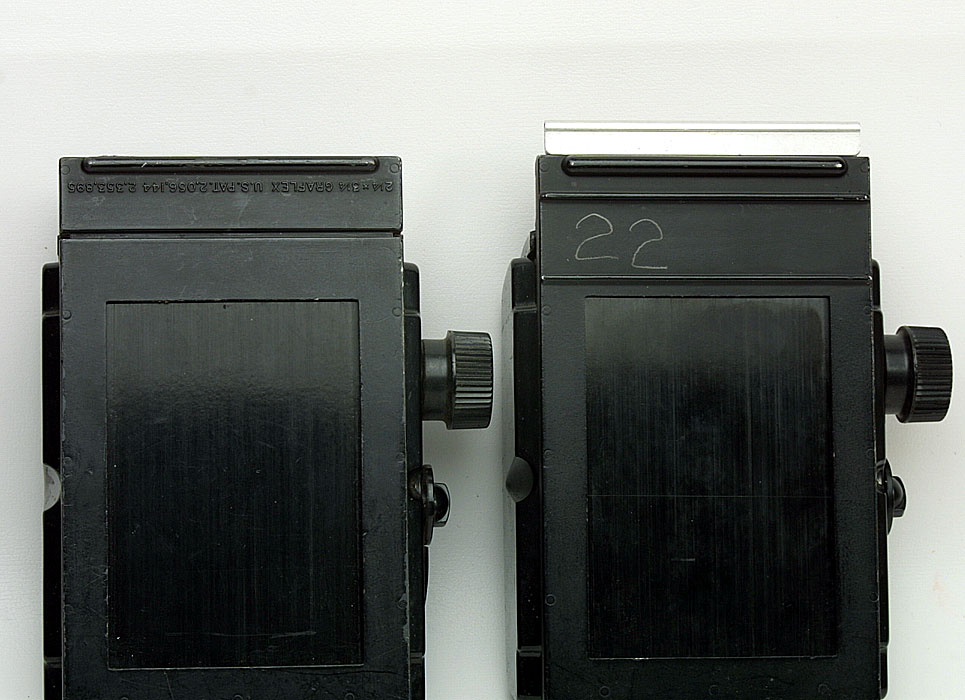
The Graflex holder, left, and the Graphic holder on the right
The rollfilm holders for each size and model of camera were available in
three formats; 6x6cm, 6x7cm and 6x9cm. Early holders were either marked 22 or
23, the 22 being 6x6 and the 23 being 6x9. With the introduction of the 6x7
format the designation changed to RH12 (6x6), RH10 (6x7) and RH8 (6x9). The
number described the number of exposures obtained on a roll of 120 film. Other
holders were designed for 220 using a different pressure plate. I am not sure
which formats were available for 220, one would think they all were, but I am
not certain. I know we've had RH20 holders before, so I know that at least they
were offered. Also a back was made for 70mm rollfilm in cassettes, only for the
4x5 cameras and the Graflex XL cameras (by means of an adapter). It was the
RH50.
The later holders used a lever for advance instead of the earlier knob, and
had rollers at either end of the film gate to help hold the film flat during
exposure. Some of the latest holders are marked Singer (yes, the sewing machine
company) when Graflex was owned by them.
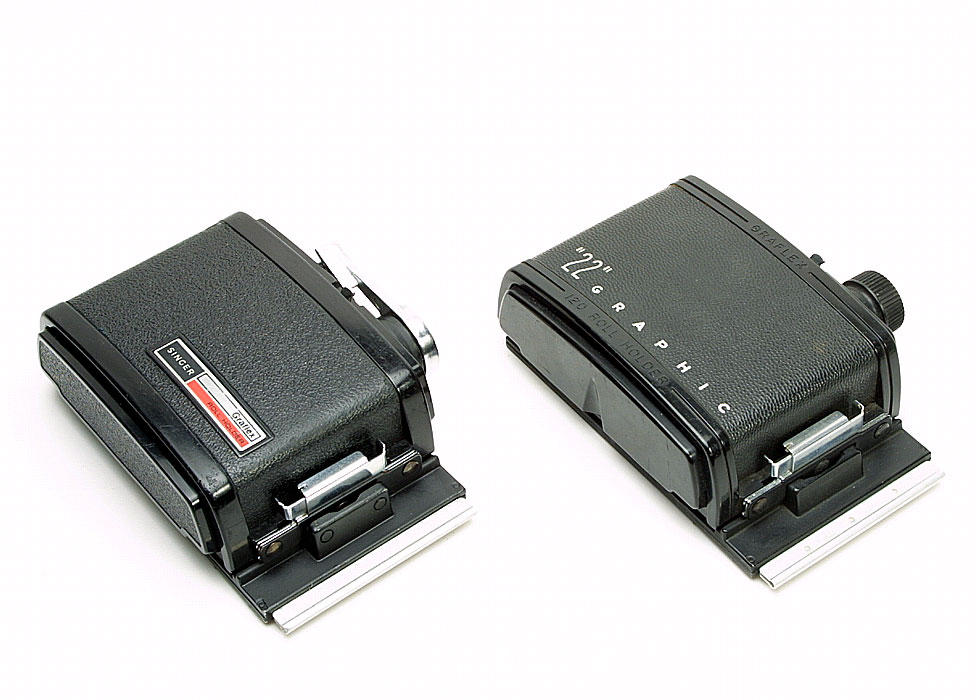
The lever and knob wind holder, the lever being a late one
marked Singer
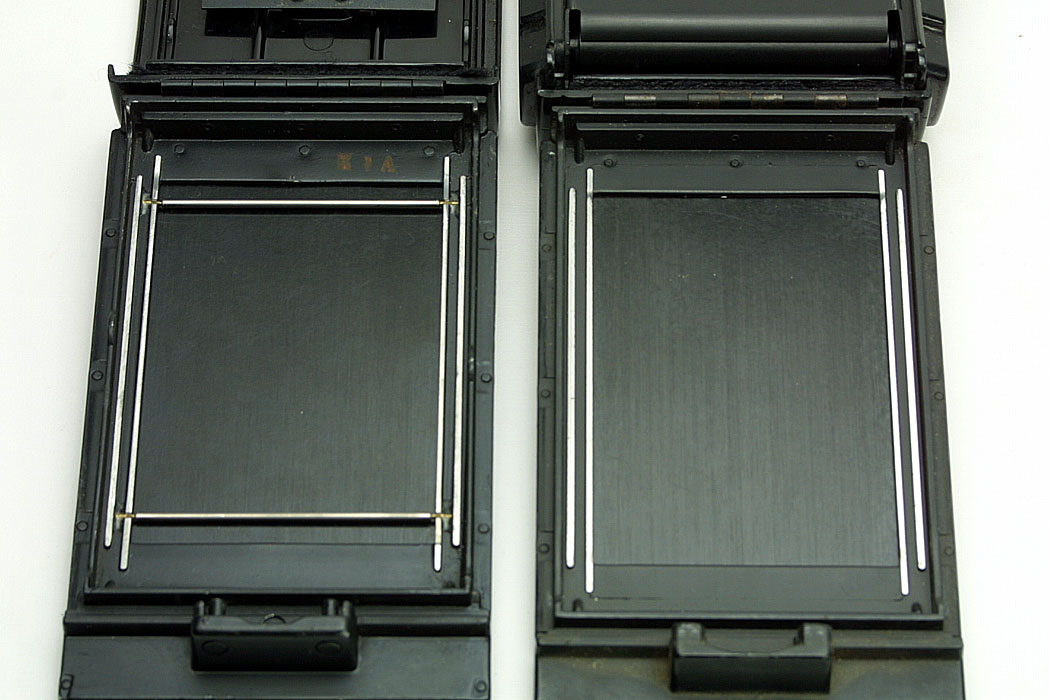
The later style holder on the left with the tension rollers
One must be careful when buying a rollfilm holder, making sure the format of
the frame matches the exposure counter on the insert. Any format insert will fit
any format frame. A mismatch will create either overlapping frames or excessive
space and a waste of film.
Another film holding device is the Grafmatic back, which holds six sheets of
film in individual septum that you preload in the darkroom. They opened like a
drawer to move the exposed sheet to the bottom of the stack. A counter kept you
from cycling around to sheets that had already been exposed.
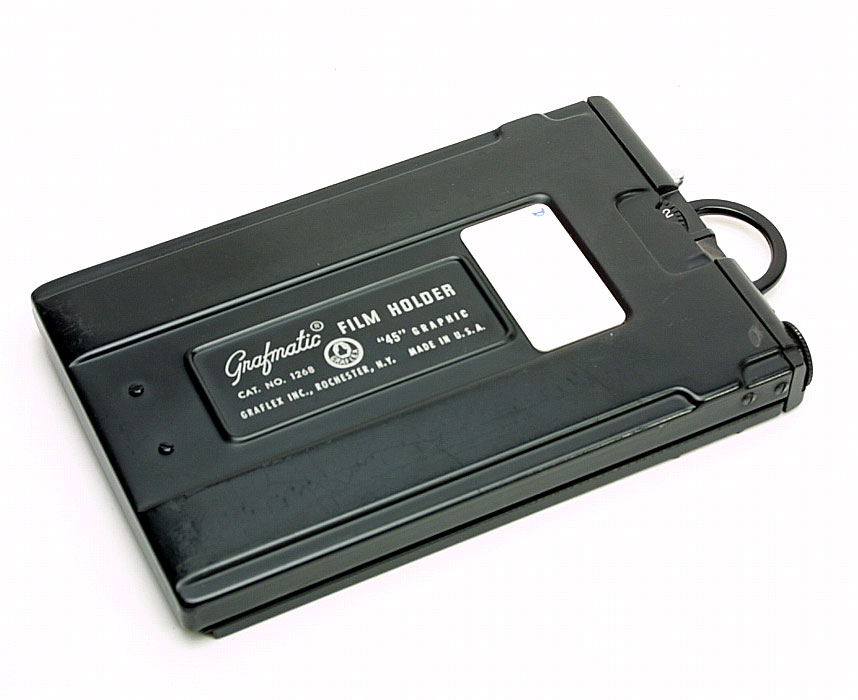
The Grafmatic closed
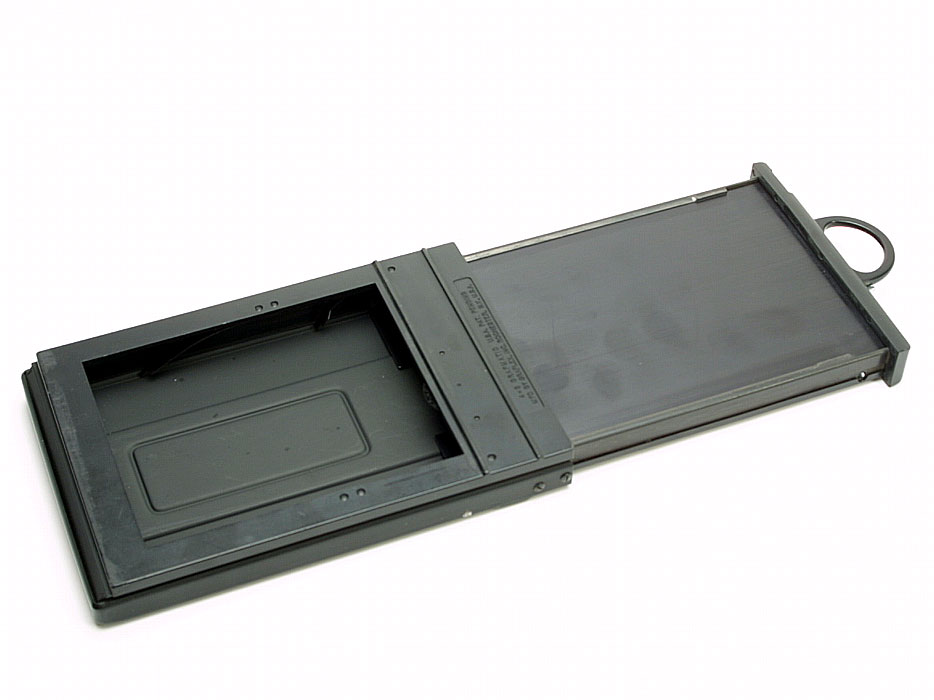
Open to advance to the next sheet
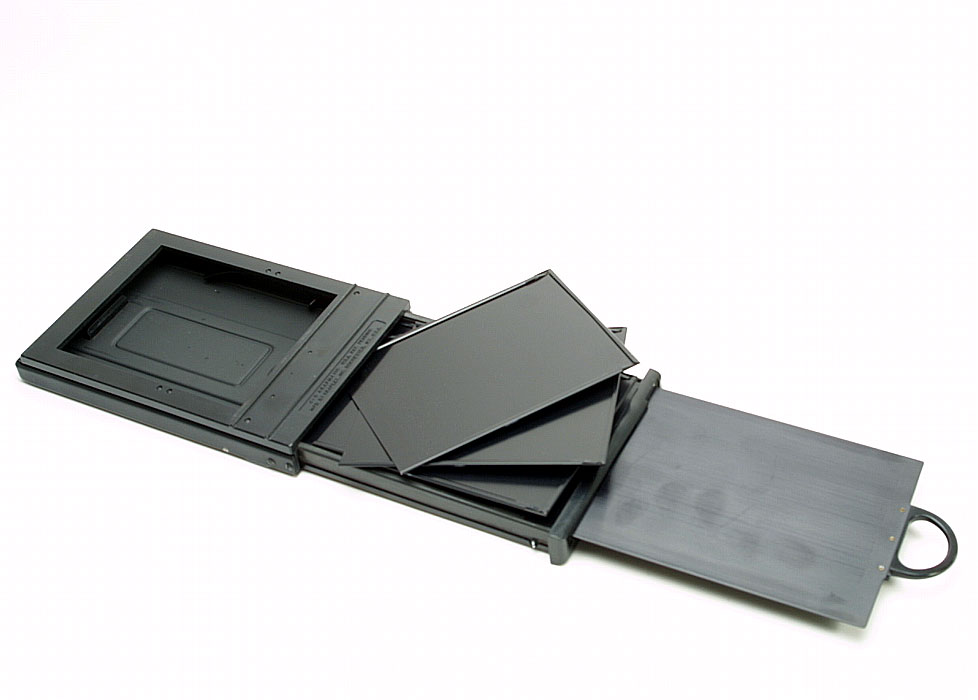
Open to load, showing septums
An earlier version of the Grafmatic back was the Cut Film Magazine. It held
12 septums, and they were changed by pulling them out mechanically into a
leather compartment. Because of the leather bag hanging off one end they are
often referred to as Bag Mags. They only fit the Graflex SLR cameras, and came
in sizes ranging from 2x3 to 5x7.
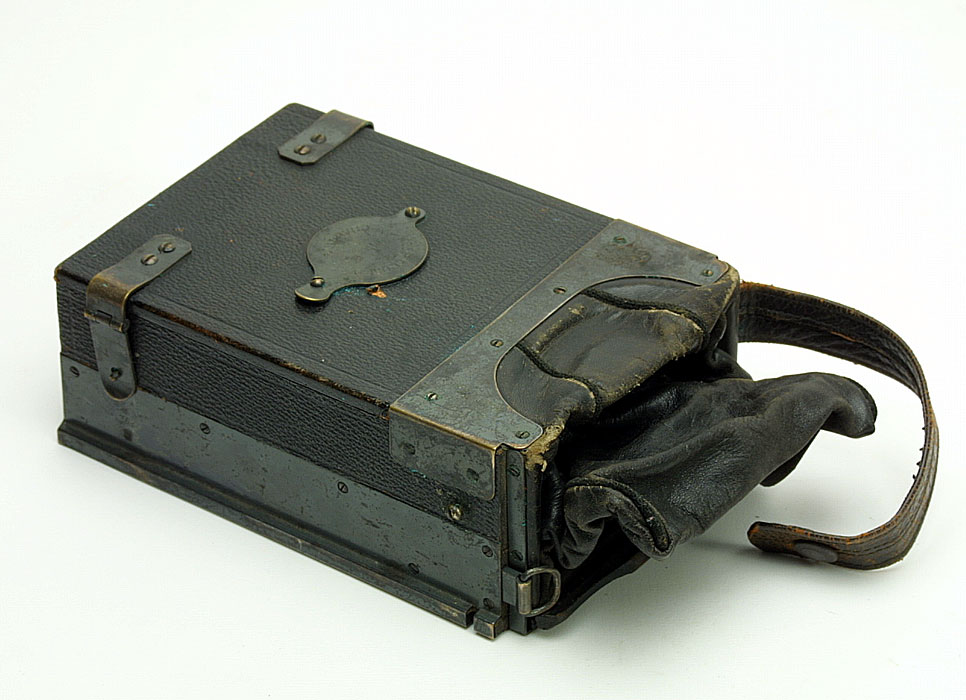
The Bag Mag closed
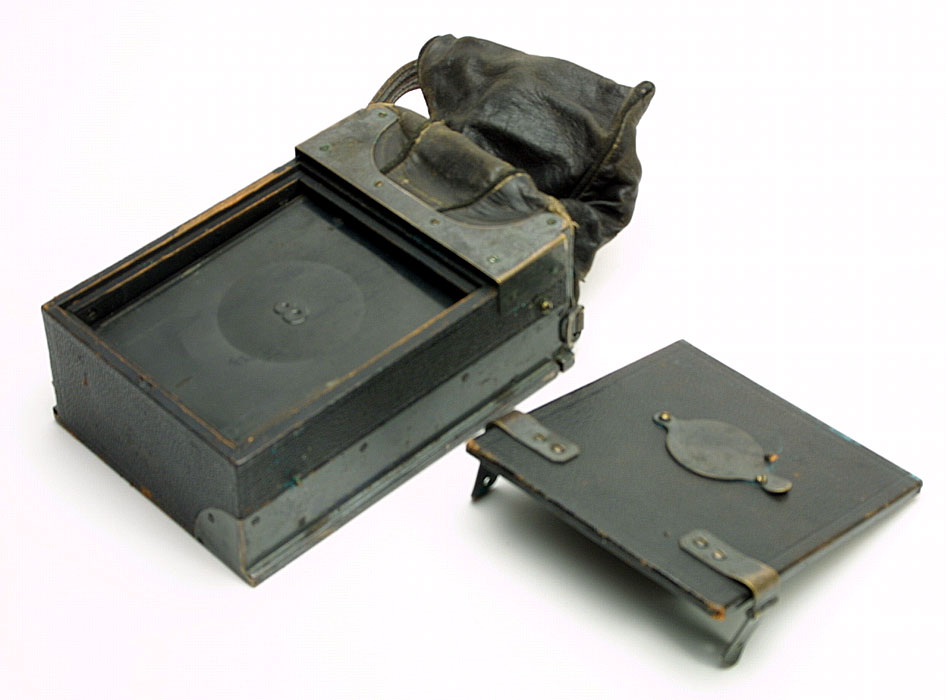
Open to show the septums
















